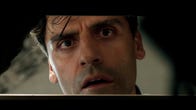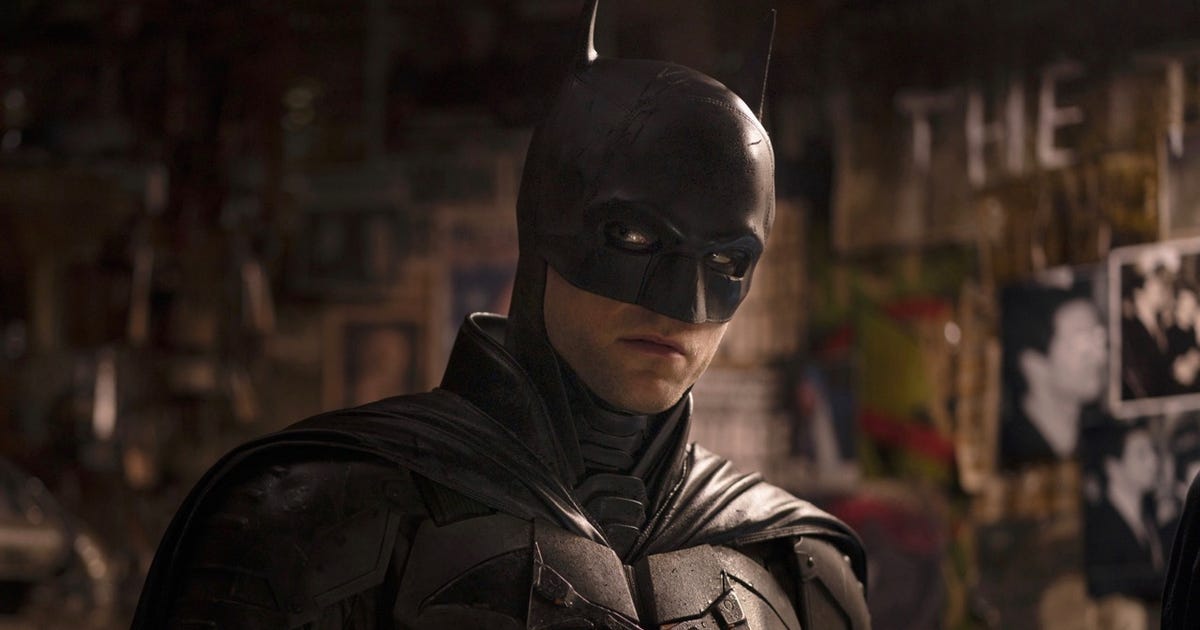
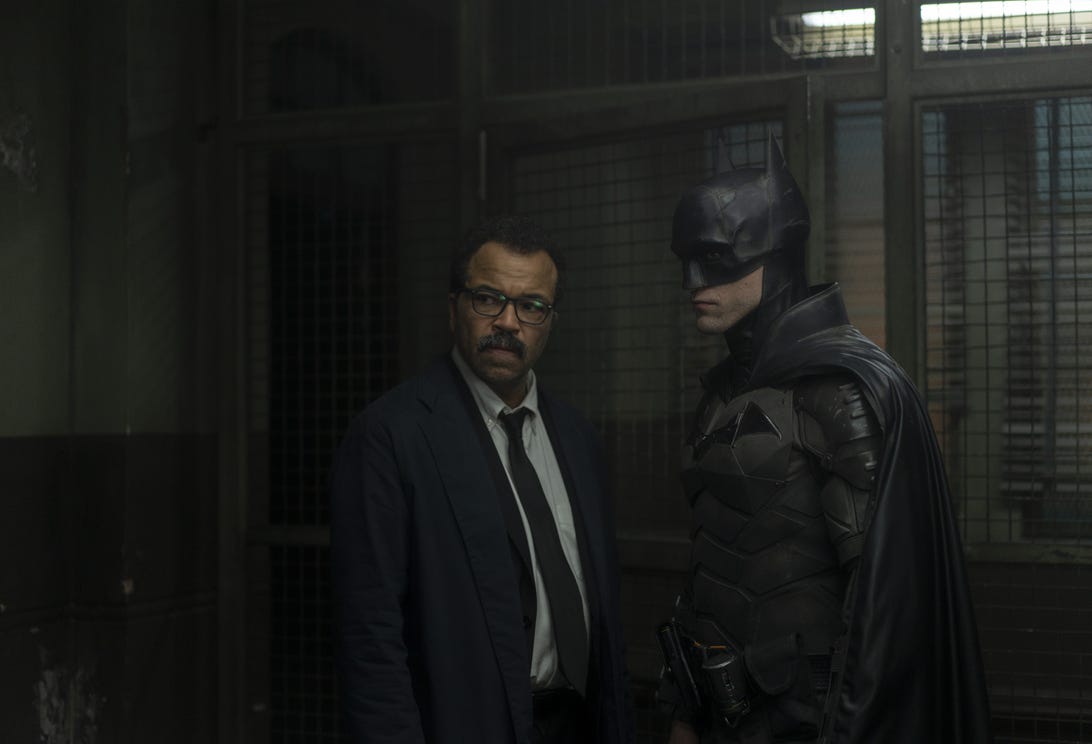
Lieutenant Gordon and Batman uncover an intense conspiracy as they hunt the Riddler.
Jonathan Olley/DC
The Batman is in movie theaters (but not on HBO Max yet), with Robert Pattinson donning Bruce Wayne’s iconic cowl and beating up Gotham City’s criminals in an intense adventure set in the early days of his vigilante career. In writer-director Matt Reeves‘ movie, Batman faces off against the wildly creepy Riddler (Paul Dano) as the puzzle-obsessed supervillain targets the city’s sleazy elites.
Teaming up with Selina Kyle (aka Catwoman, played by Zoë Kravitz) and GCPD Lieutenant James Gordon (Jeffrey Wright), our hero unravels Riddler’s dark plot to expose the depths of the city’s corruption. It’s a twisty-turny tale, so let’s take a closer look at the ending, some of the major revelations, Barry Keoghan’s chilling cameo and sequel possibilities. We also have a separate explainer for the post-credits Easter egg.
Be warned, SPOILERS are about to swoop in.
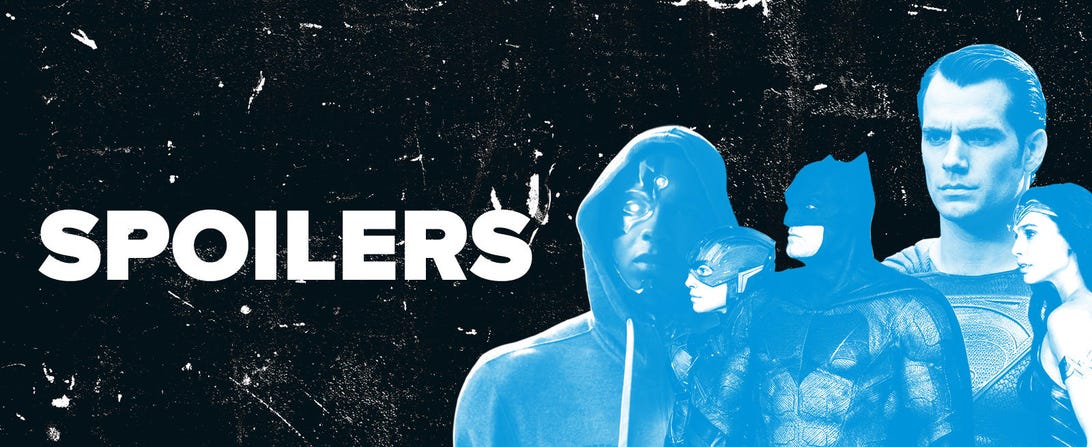
Gotham underwater
The Riddler allows himself to be arrested after exposing the depths of Gotham City’s corruption, but only so he can watch his scheme’s final act play out from the safety of his cell in Arkham Asylum. A series of trucks are rigged to blow up the seawall around the city, flooding its streets and forcing everyone to flee to the venue where new mayor Bella Reál (Jayme Lawson) is celebrating her victory.
A bunch of the villain’s online followers don his Zodiac Killer-inspired costumes like his and infiltrate the event. They open fire on the trapped crowds, but Batman, Catwoman, Gordon and the city’s cops stop them in a pretty epic action sequence.

The Riddler’s endgame sees Gotham City flooded.
Jonathan Olley/DC
Stunned after getting shot at point-blank range, Batman jabs himself with adrenaline and almost beats one of the goons to death but is stopped before he goes too far. After unmasking the guy, Gordon asks who he is.
“Me, I’m vengeance,” he responds, mirroring Batman’s slogan and making the hero realize he’s been a bit too dark and broody in his approach to crime fighting.
Batman leaps into action to stop people from getting electrocuted in the flood waters, then rescues the new mayor and a bunch of others who got trapped under debris. As the power goes out, he lights a flare (a Bat-flare?) and leads everyone to safety, becoming a literal beacon of hope for the city.
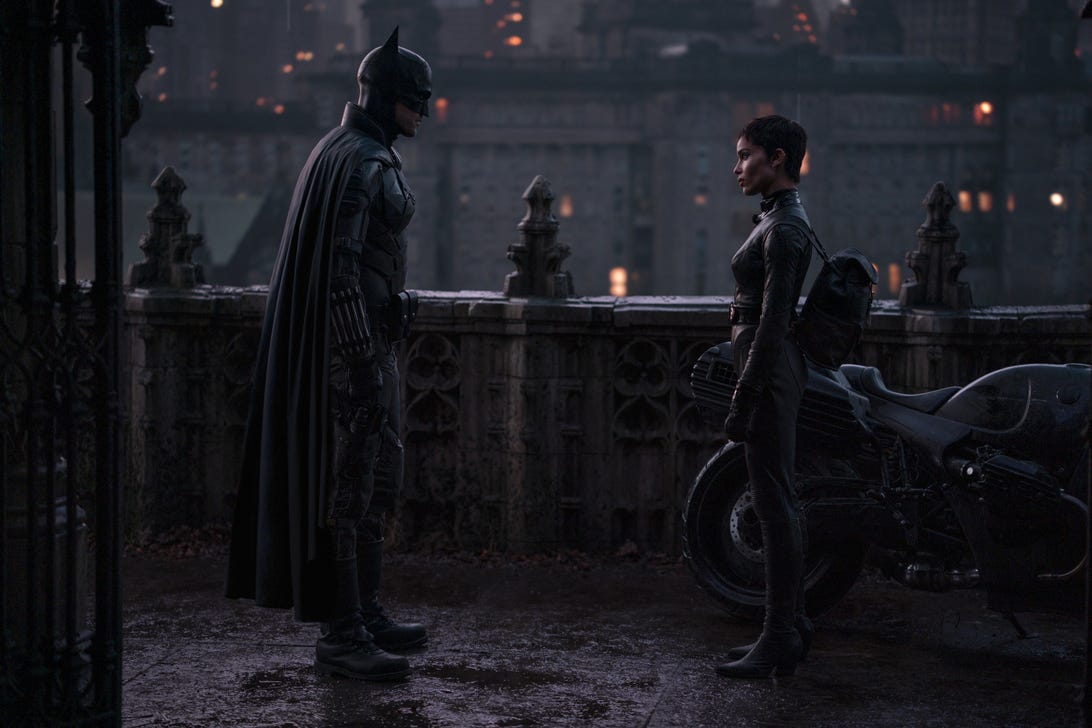
The Bat and the Cat have a fiery alliance.
Jonathan Olley/DC
With the city flooded and under martial law, Selena tells Batman she’s going upstate or to Blüdhaven (a nearby city that, in the comics, is traditionally stomping ground of Batman ally Nightwing, but that character hasn’t been established in this universe). She tries to persuade Batman to go with her so they can be broody vigilantes together, but he opts to stay in Gotham.
Joke(r)’s on you
Stuck in Arkham, Riddler is understandably upset that his horrible plan didn’t play out fully. However, he’s greeted by a seemingly sympathetic fellow inmate (Barry Keoghan). We only see him momentarily, but his facial scars and creepy laugh hint at his identity.
“One day you’re on top, the next you’re a clown… there are worse things to be,” he says. “Gotham loves a comeback story.”
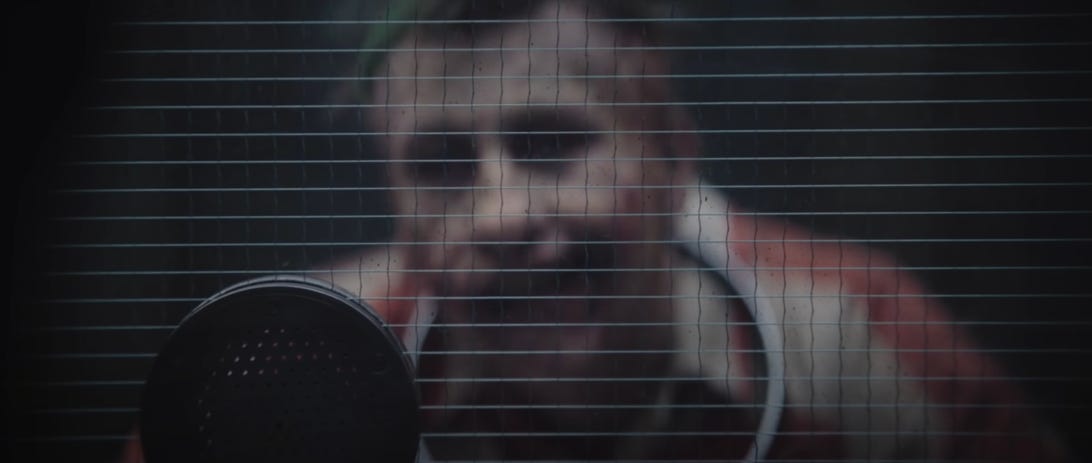
A deleted scene offers a clear-ish look at Barry Keoghan’s Joker.
Warner Bros.
“Riddle me this: the less of them you have, the more one is worth,” he asks, playing into Riddler’s shtick.
“A friend,” the Riddler responds. Yay, villain friends.
Keoghan’s character is credited as “unseen Arkham inmate,” but he’s almost certainly this universe’s Joker. It’s unclear if he’s encountered Batman yet or why he’s in Arkham, but this appears to be setting up some kind of supervillain pairing in a sequel or at least hinting our hero will face a new kind of threat in this universe. This movie is reportedly the first of a trilogy, and two HBO Max shows (a police procedural set in the GCPD and a Penguin-centric crime series) are seemingly in the works.
Warner Bros. also released a pretty excellent deleted scene in which Batman visits Keoghan’s character in prison, seeking his advice about the Riddler’s identity. It gives us a better look at the creepy villain’s scarred visage and hints they had a run-in about a year before the movie’s events. But that shouldn’t be taken as canon since the scene isn’t in the movie.
Gotham conspiracy
The mayor, police commissioner and district attorney suffer horrible deaths as part of Riddler’s insidious plot, due to their roles in a conspiracy to bust crime boss Sal Maroni. The villain’s puzzles send Batman and Gordon on a hunt for an unidentified informant known as El Rata Alada — Spanish for The Winged Rat. Which sounds like it’s referring to a bat, but it’s revealed that Riddler is hunting for a snitch whose name is derived from a bird — the super sleazy mobster Carmine Falcone (John Turturro).
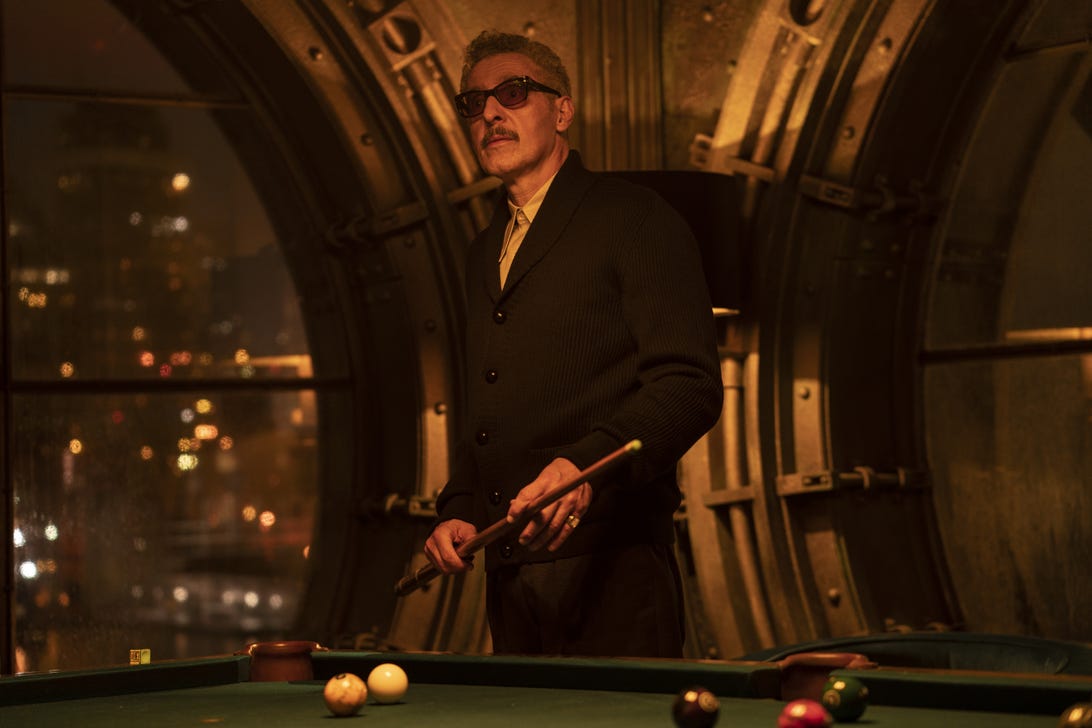
Carmine Falcone is the rot at Gotham’s heart.
Jonathan Olley/DC
With Maroni off the streets, Falcone took over his drug operation. Those who helped him or looked the other way got paid, and everybody won. Except Gotham, which turned into even more of a cesspool. So Riddler decided to reveal the depths of the city’s corruption as he broadcast his killings online.
Before Batman and the GCPD can take Falcone into custody, Selena confronts him with the revelation that he’s her father and prepares to kill him. He turns the tables and taunts Selena by confessing to strangling her mother as he chokes her but is stopped by Batman.

Penguin may be Gotham’s new kingpin.
Jonathan Olley/DC
Falcone is then led outside to be arrested, where the Riddler guns him down from afar — the supervillain wanted to get the mobster into the open so he could kill him. This leaves a power vacuum in Gotham’s criminal underworld, which will most likely be filled by Oz (AKA Penguin, played by Colin Farell).
Wayne family secrets
Riddler also targets Bruce Wayne by sending him a bomb in the mail. It doesn’t reach its intended recipient (what kind of billionaire opens their own letters?), instead wounding faithful butler Alfred Pennyworth (Andy Serkis).
During one of Riddler’s broadcasts, he reveals some of the darkness in the Waynes’ past. Bruce’s late mother, Martha, was a member of the Arkham family whose parents died in a murder-suicide, with the trauma leading her to be institutionalised multiple times growing up.
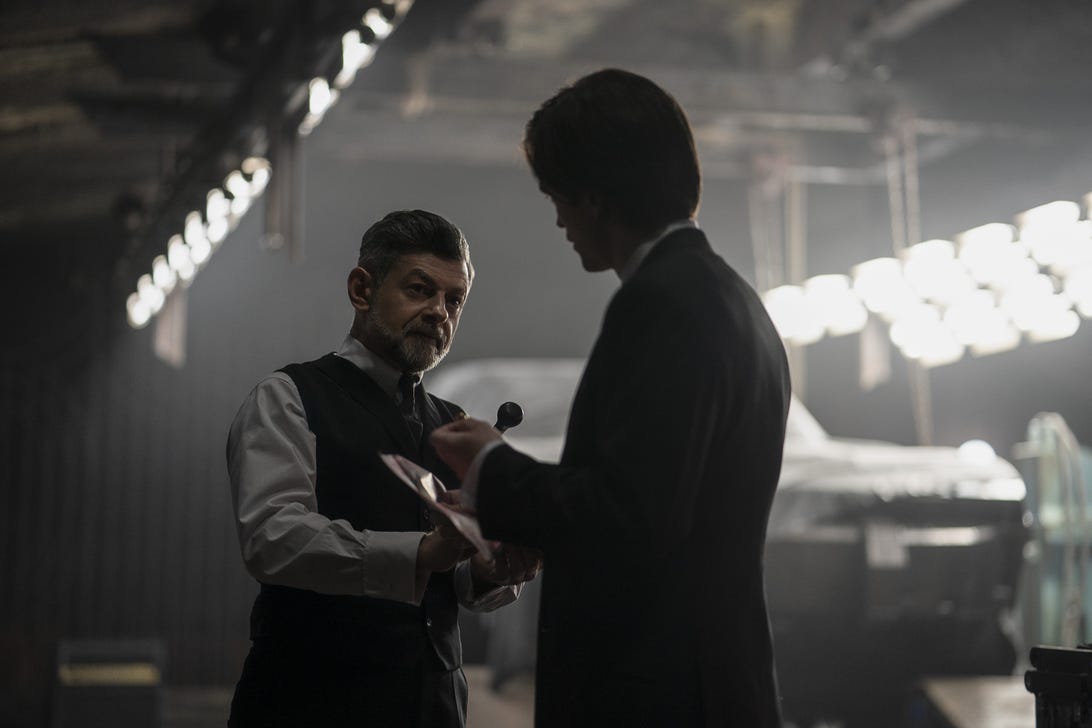
Alfred offers Bruce insight into his late father.
Jonathan Olley/DC
Martha apparently found stability when she married Thomas Wayne and had Bruce, but Thomas’ decision to run for mayor of Gotham led reporter Edward Elliot to dig into the family’s past.
This threatened to expose Martha’s story, and Thomas went to Falcone for help (because going to a mobster for aid always ends well) and Elliot ended up dead. Falcone tells Bruce that Thomas had him kill Elliot, but Alfred offers a different version of events: Thomas asked Falcone to scare Elliot off the story, but Falcone killed the reporter and Thomas said he was going to confess everything to the police.
Movies Coming in 2022 From Marvel, Netflix, DC and More
The Waynes were killed shortly afterward — the murder remains unsolved in this continuity — leaving the charity fund Thomas established to renew Gotham to be snatched by the city’s corrupt elites.
This left Gotham’s poor in worse shape than ever, but none more so than young Edward Nashton. The super-smart orphan grew up in squalor, and seeing Bruce earning the city’s sympathy after Matha and Thomas were killed filled him with a jealous rage, reasoning that the Wayne family fortune made losing his parents easier than had been for others. And so Edward grew up to be the Riddler.
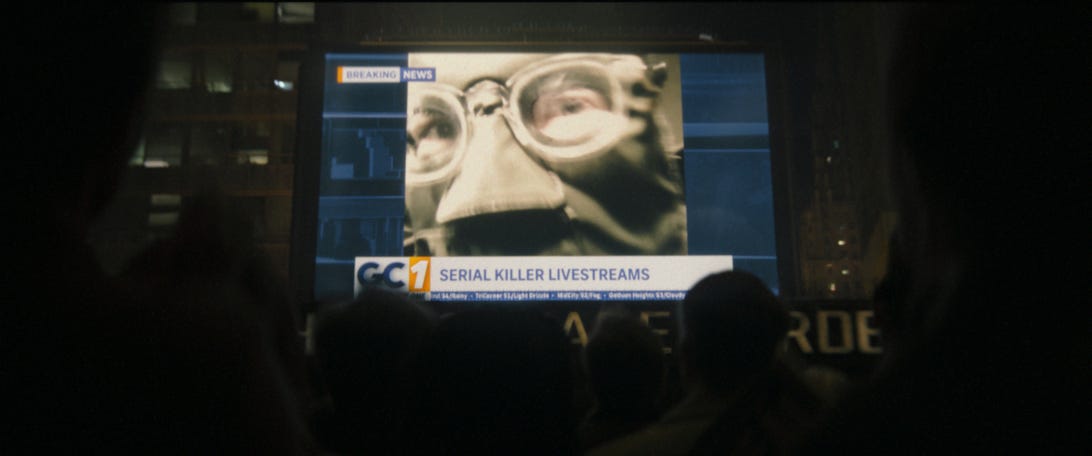
We get another dose of the Riddler’s creepiness after the credits.
Jonathan Olley/DC
Post-credits Easter egg
The Batman doesn’t have a post-credits scene, but there is one last reference to the Riddler’s campaign — we see a typed “?” followed by “GOOD BYE” and www.rataalada.com seems to flash up on the screen for the briefest of moments. That URL brings you to a viral marketing website where you answer a series of the villain’s questions.
Comic inspiration
This movie is conceptually and tonally similar to iconic 1996 story The Long Halloween, which sees Batman trying to deduce the identity of a serial killer who slays people on holidays. He also works with Gordon and DA Harvey Dent to prevent a gang war between the Falcone and Maroni crime families.
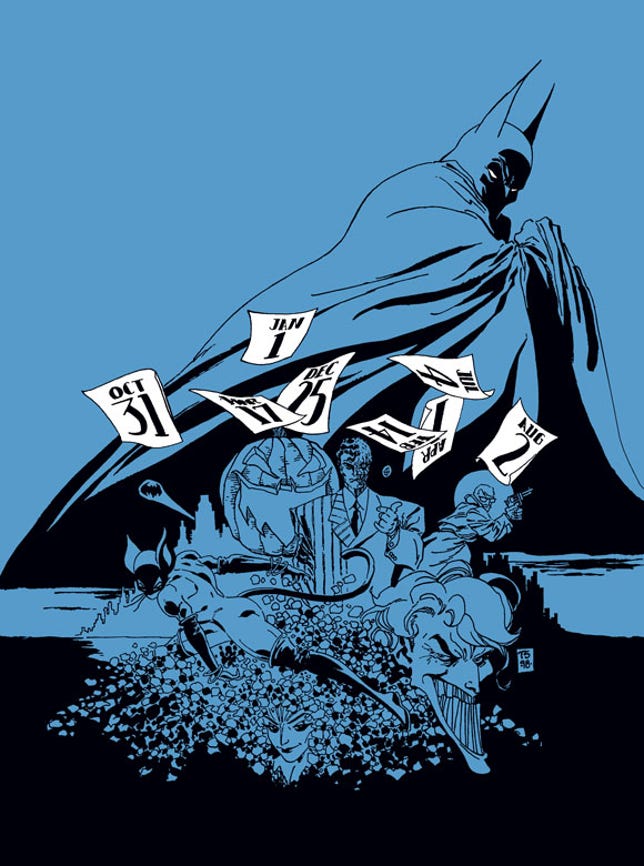
The Long Halloween is among the most beloved Batman stories of all time.
DC Comics
It acts as a followup to 1987 Batman origin story Year One, which The Batman director Reeves also cited as inspiration. Christopher Nolan’s Dark Knight trilogy weaved in elements from Year One and The Long Halloween as well — they’re essential reading for any Batman fan. They’ve also been adapted into animated movies.
Martha Wayne isn’t traditionally a member of the Arkham family in the comics, but 2012 graphic novel Batman: Earth One takes place in a continuity where she is. In volume 1 of that story, Martha’s mother killed her father and left the family scandalized. Thomas Wayne also runs for mayor against Oswald Cobblepot, but he and Martha are killed by a mugger. Bruce’s relationship with Alfred is quite similar to the dynamic seen in The Batman too.
Earth One’s second volume introduces a serial killer Riddler who plants a bomb to get Batman’s attention, resembling The Batman’s version of the character.
The idea of the Riddler flooding Gotham mirrors the excellent 2013 storyline Zero Year, which takes place at a similarly early point in Batman’s career.
In an interview with CNET, director Reeves noted that 2000 story Ego influenced the movie’s approach to Bruce’s inner battle.
“It got into the psychology of the beast within being Batman, this drive for vengeance, this instinctual side,” he said.
In the 2011 comics storyline Gates of Gotham, Edward Elliot was one of the people responsible for the construction of Gotham City in the 1800s (along with Bruce’s ancestor Alan Wayne and Penguin’s ancestor Theodore Cobblepot). Elliot is the ancestor of Thomas Elliot, a childhood friend of Bruce whose jealousy led him to become the supervillain Hush and launch a campaign against Batman.
